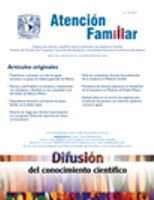Clinical Ability in an Emergency Room for the Attention of the Acute Ischemic Coronary Syndrome Patient
Main Article Content
Abstract
Objective: to measure the level of clinical ability for the treatment of the patient with Acute Ischemic Coronary Syndrome (acs) of physicians in the Emergency Room of the “Dr. Belisario Dominguez” General Hospital of the Institute of Security and Social Services of the State Workers (issste), in Tuxtla Gutiérrez, Chiapas. Methods: cross-sectional and comparative study; 57 physicians of the Emergency Room were evaluated, through an instrument of 30 items constitued by seven indicators. Consistency of 0.731 (Kuder-Richardson). The statistical analysis included the Kruskal Wallis test and the U of Mann-Whitney. It was used the correction of Bonferroni to establish a p<0.017 as significant. Results: 77.2% of the physicians showed a clinical ability explained by random. By analyzing the indicators, internal undergraduate medical group showed a greater diagnostic integration capacity (p=0.010) and a less iatrogenic omission (p=0.012). Conclusions: it is important to introduce a program of continuous training, in the er, through the discussion of clinical cases that favor the development of complex capabilities as the explored in this study.
Downloads
Download data is not yet available.
Article Details
How to Cite
Balcázar Rincón, L. E., Ramírez Alcántara, Y. L., & Ramos Ortega, G. (2016). Clinical Ability in an Emergency Room for the Attention of the Acute Ischemic Coronary Syndrome Patient. Atención Familiar, 23(4). https://doi.org/10.22201/facmed.14058871p.2016.4.57359
